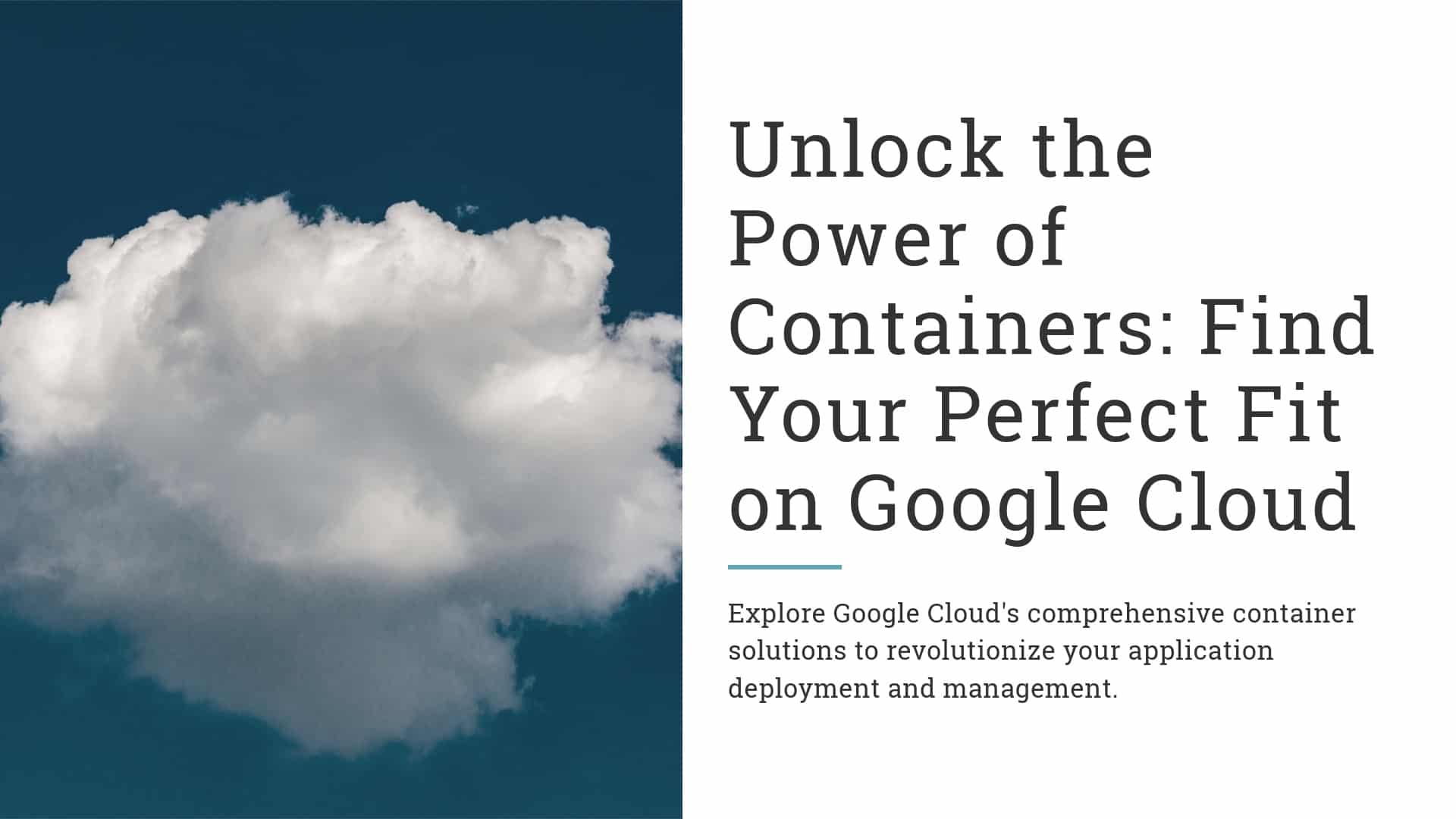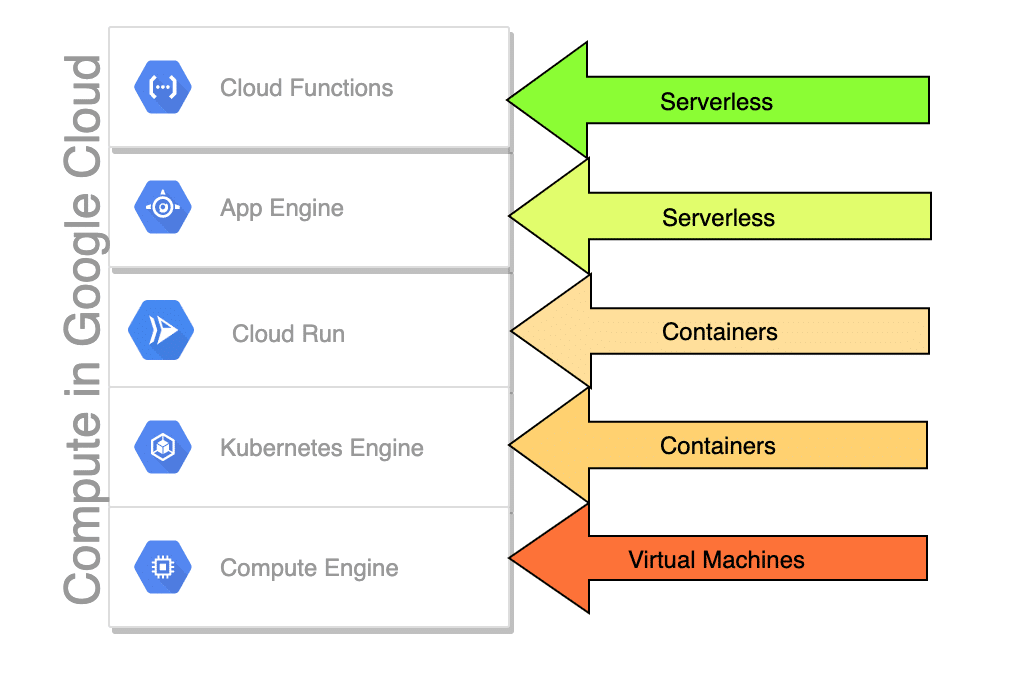But with great power comes great complexity. Google Cloud offers a rich array of container options—each tailored for specific needs and use cases. From fully managed serverless solutions to powerful orchestration platforms, how do you know which one is the perfect fit for your business? This guide will help you navigate these options and make an informed choice.
Google Kubernetes Engine (GKE)
Google Kubernetes Engine (GKE) is a fully managed Kubernetes service that simplifies container orchestration. It provides the tools and infrastructure needed to deploy, manage, and scale containerized applications seamlessly.
Key Features and Benefits
- Scalable and Resilient Infrastructure: Automatically scales nodes and pods with multi-zone availability
- Deep Integration with Google Cloud Services: Native support for Cloud Monitoring, Logging, and Anthos
- Customizable for Specific Workloads: Granular control over cluster configurations and networking
Ideal For: Large-scale applications requiring precise orchestration and teams with Kubernetes expertise seeking advanced control and flexibility.
GKE Autopilot
GKE Autopilot is a fully managed Kubernetes offering designed to simplify Kubernetes operations. Unlike traditional GKE, Autopilot takes care of cluster management, ensuring your focus remains on deploying and running your applications without worrying about the underlying infrastructure.
Key Features and Benefits
- Simplified Management: Autopilot handles provisioning, scaling, patching, and upgrades automatically
- Cost-Efficient: Pay only for the pods you use, not for the nodes, reducing overall costs
- Pre-configured Best Practices: Clusters are optimized and secure out of the box
Ideal For: Small teams wanting Kubernetes without operational complexity and applications with standard requirements that don’t need heavy customization.
Cloud Run
Cloud Run is a fully managed serverless platform designed for running containerized applications without the need to manage infrastructure. It supports any language or runtime as long as it is packaged in a container, offering developers unmatched flexibility.
Key Features and Benefits
- Fully Managed, Scales to Zero: Automatically scales up or down based on demand, including scaling to zero when idle
- Pay-Per-Use Pricing: Charges based only on resources consumed during request handling
- Container Flexibility: Supports any containerized application regardless of language or framework
Ideal For: Stateless HTTP applications, microservices architecture, and teams needing container flexibility with serverless simplicity.
Cloud Functions
Cloud Functions is an event-driven serverless platform that allows you to execute single-purpose functions in response to specific triggers, such as HTTP requests, database updates, or messages in a queue. It eliminates the need to manage servers, enabling you to focus on writing code to handle your events.
Key Features and Benefits
- Event-Driven Execution: Triggers functions in response to events like HTTP requests, Cloud Storage changes, and Pub/Sub messages
- Built-in Autoscaling: Automatically scales to meet demand based on event load
- Pay-Per-Use Pricing: Charges only for compute time during function execution
Ideal For: Short-lived workloads, event-driven automation, and integrations requiring lightweight, single-purpose functions.
Google App Engine
App Engine is a Platform-as-a-Service (PaaS) solution that allows developers to build, deploy, and scale web applications without worrying about managing the underlying infrastructure. It’s designed for simplicity and speed, enabling you to focus on writing code while Google Cloud handles the rest.
Key Features and Benefits
- Multiple Language Support: Compatible with Python, Java, Node.js, PHP, Ruby, and Go
- Managed Scaling: Automatically scales applications to handle varying traffic levels
- Developer-Friendly Workflow: Integrated with Google Cloud’s CI/CD tools for streamlined deployments
Ideal For: Rapidly deploying web applications, startups and small businesses, and teams focused on code rather than infrastructure management.
Anthos
Anthos is a hybrid and multi-cloud platform that provides a unified framework for managing applications across on-premises data centers, Google Cloud, and other public clouds. It enables organizations to run containerized applications consistently, regardless of the environment, while maintaining centralized visibility and control.
Key Features and Benefits
- Unified Management: Centralized control plane for managing workloads across multiple environments
- Multi-Cloud Support: Runs on Google Cloud, AWS, Azure, or on-premises using Kubernetes
- Reduces Vendor Lock-In: Applications can move seamlessly between environments
Ideal For: Enterprises with hybrid/multi-cloud strategies, applications requiring consistent management across environments, and modernizing legacy applications.
Choosing the Right Container Solution
Choosing the right container option on Google Cloud depends on your specific needs, technical expertise, and business goals. Here’s a quick decision guide to help you choose:
Decision Matrix
| If you need… | Best Option |
| Fully managed, serverless solution | Cloud Run or Cloud Functions |
| Web application or microservices | Cloud Run (containerized) or App Engine (simple) |
| Precise container orchestration | GKE or GKE Autopilot |
| Small team looking for simplicity | GKE Autopilot, Cloud Run, or App Engine |
| Hybrid or multi-cloud capabilities | Anthos |
| Full control over infrastructure | Compute Engine or GKE |
| Event-driven workloads | Cloud Functions |
Pro Tip: Start Small, Scale Smart
Begin with simpler solutions like Cloud Run or GKE Autopilot for most use cases. You can always migrate to more complex options like full GKE as your needs grow and your team gains expertise.
Elevate Your IT Efficiency with Expert Solutions
Transform Your Technology, Propel Your Business
Ready to unlock the power of containers on Google Cloud? Whether you’re starting with your first containerized application or optimizing complex Kubernetes deployments, choosing the right platform is crucial for success. At InventiveHQ, our cloud experts help you navigate these choices and implement the perfect container strategy for your business needs.



